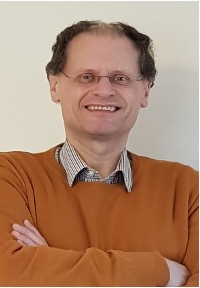The
ABINIT Software Project: Overview and Impact
Xavier Gonze,1,2*
1 Université Catholique de Louvain, B-1348 Louvain-la-neuve, Belgium
2 Skolkovo Institute of Science and Technology, Moscow, Russia
ABSTRACT: ABINIT is probably the first electronic-structure package
to have been released under an open-source license, about twenty years ago. The articles describing the project,
its evolution, impact, environment are cited more than 5000 times. ABINIT
implements density functional theory (DFT), density-functional perturbation
theory (DFPT),
many-body perturbation theory (GW approximation and
Bethe-Salpether equation), and more specific or advanced formalisms, like dynamical mean-field theory (DMFT) and
the "temperature-dependent effective potential" (TDEP) approach for anharmonic effects. Relying on planewaves
for the representation of wavefunctions, density and other space-dependent quantities, with pseudopotentials or
projector-augmented waves (PAW), it is well suited for the study of periodic materials, although nanostructures and
molecules can be treated with the supercell technique.
The presentation will start with a brief description of the project and a list of the associated ABINIT capabilities. Then, the usage of ABINIT within the Materials Project will be described : more than 1500 phonon band structures have been generated from high-throughput calculations using ABINIT, with the accompanying dielectric and thermodynamic properties, and made publicly available and downloadable. Recent achievements in the field of electron-phonon coupling effect will also been briefly presented : computation of the electronic mobility in different semiconductors, revealing the role of the quadrupoles in polar and covalent solids, computation of the zero-point renormalization of the electronic band gap in thirty semiconducting and insulating materials, with range 0.3-0.7 eV when light elements are present, revealing also the predominance of the non-adiabatic effects.
Keywords:electronic structure; ABINIT; the materials project; high-throughput calculations; phonon band structures; electron-phonon interaction.

X. Gonze has completed his PhD in 1990 from the Université Catholique de Louvain, Belgium. Among several distinctions, he has been elected fellow of the American Physical Society in 2007 and member of the Royal Academy of Belgium in 2011. He has published more than 225 articles in international journals (citation number >20000) and received about 120 invitations at professional meetings. His scientific interests range from development of software application ABINIT to applications of computational tools to high-technology materials (e.g. LED, batteries).